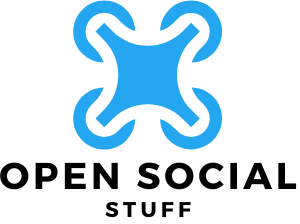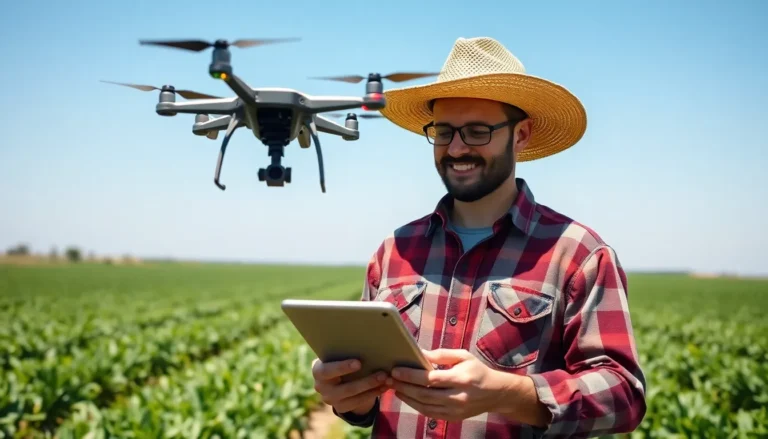Programming languages have come a long way since the days of punch cards and endless lines of assembly code. Imagine coding in a world where every keystroke felt like a game of chess—strategic but slow. Fast forward to today, and it’s like a coding buffet where developers can pick and choose from a smorgasbord of languages, each with its quirks and specialties.
Table of Contents
ToggleOverview of Programming Languages
Programming languages serve as the backbone of software development, enabling communication between humans and machines. They have undergone significant transformations since their inception. Early languages, such as assembly and machine code, required a detailed understanding of computer hardware, making coding a meticulous process.
The introduction of high-level languages in the 1950s, like Fortran and COBOL, marked a substantial shift. These languages simplified the coding process, allowing developers to write programs in a more human-readable format. Consequently, adopting high-level languages democratized programming, making it accessible to a broader audience.
In the 1970s and 1980s, languages such as C and Pascal emerged, offering improved efficiency and more structured programming paradigms. Developers benefited from features like data types and control structures, paving the way for structured programming. This evolution continued with the rise of object-oriented programming in the 1990s, facilitated by languages like C++ and Java. This paradigm shift emphasized the use of objects to represent data and methods, enhancing code reusability and scalability.
Entering the 21st century, a diverse array of programming languages has flourished. Languages such as Python and JavaScript gained popularity due to their simplicity and versatility. Developers now enjoy the flexibility to choose languages based on the specific requirements of projects, fostering innovation and creativity.
Current trends emphasize the importance of efficiency, community support, and adaptability. The rise of frameworks and libraries, along with the growing emphasis on factors like machine learning and web development, continue to shape the landscape. Each programming language offers unique features, tailoring itself to particular tasks and applications. Thus, as languages continuously evolve, they reflect the changing needs of the tech industry.
Early Programming Languages
The development of early programming languages marked a pivotal shift in computer science. Initial coding relied heavily on low-level languages for direct machine communication.
Assembly Language
Assembly language emerged in the 1940s and offered a symbolic representation of machine code. Programmers found assembly more user-friendly compared to binary, allowing them to write instructions that the computer could understand. This language required a deep understanding of hardware specifics, making coding meticulous but powerful for performance-focused tasks. Different computer architectures had unique assembly languages, increasing complexity for programmers. Despite the challenges, assembly language laid the groundwork for more advanced programming paradigms.
First High-Level Languages
The 1950s introduced high-level languages like Fortran and COBOL, which transformed coding through abstraction. Fortran focused on scientific computations, enabling complex mathematical operations without delving into hardware details. COBOL targeted business applications, simplifying data manipulation and report generation. These languages accelerated development speed and democratized programming for non-experts. High-level languages made coding accessible, shifting the focus from hardware management to problem-solving and innovation. Their introduction set the stage for ongoing advancements in the programming landscape.
Major Milestones in Evolution
Programming languages have undergone significant changes, impacting software development and coding practices. Key milestones represent turning points in how developers create software.
The Birth of C Language
C language emerged in the early 1970s as a powerful tool for system programming. Dennis Ritchie at Bell Labs designed it to improve earlier languages like B. Distinct from its predecessors, C allowed for low-level memory access while remaining user-friendly. The introduction of structured programming concepts through C led to cleaner and more maintainable code. Many influential languages, including C++, directly derived from C, showcasing its lasting impact on the coding landscape. With its versatility, C became foundational for operating systems and embedded systems, establishing itself as a dominant force in programming.
Object-Oriented Programming
Object-oriented programming (OOP) changed paradigms in the 1990s, emphasizing code reusability and modularity. This approach focuses on creating objects that encapsulate data and behaviors, enhancing software organization. Languages like C++ and Java pioneered OOP, providing developers with tools for managing complex applications efficiently. With concepts such as inheritance and polymorphism, OOP allowed for more sophisticated software design. Application development became more efficient, enabling collaboration among larger teams. As a result, OOP remains a cornerstone in modern software development, influencing numerous contemporary languages and frameworks.
Modern Programming Languages
Modern programming languages encompass a range of paradigms, including scripting languages and functional programming. These languages reflect ongoing advancements and adapt to developers’ needs.
Scripting Languages
Scripting languages streamline web development and automation tasks. Languages such as Python, Ruby, and JavaScript enable developers to write code quickly without compiling, enhancing workflow efficiency. Python, known for its readability, suits beginners and professionals alike in areas like data analysis and machine learning. JavaScript powers interactive web applications, making it indispensable in frontend development. With extensive libraries and frameworks, scripting languages promote rapid application development and extensive community support, allowing developers to tackle complex problems with ease.
Functional Programming
Functional programming emphasizes immutability and first-class functions, setting it apart from other paradigms. Languages like Haskell, Scala, and F# promote a declarative coding style, focusing on what to achieve rather than how to execute tasks. Haskell, recognized for its strong type system, enhances code safety and reliability. Scala integrates seamlessly with Java, offering both object-oriented and functional programming capabilities. Functional programming promotes modularity and code reuse, fostering cleaner and more maintainable code. It addresses modern computing challenges, making it increasingly relevant in today’s software development landscape.
Future Trends in Programming Languages
The future of programming languages points towards exciting innovations and transformations. Two significant trends shape this landscape: the impact of artificial intelligence and the emergence of new paradigms.
Impact of Artificial Intelligence
AI continues to revolutionize programming languages. Developers now incorporate machine learning capabilities directly into programming frameworks. Tools that leverage AI assist in code generation, debugging, and optimization, improving productivity. Some languages, like Python, gain traction due to extensive AI libraries that streamline development processes. As AI evolves, languages will incorporate more integrated features that facilitate natural language processing, making programming more accessible to a broader audience.
Emergence of New Paradigms
New programming paradigms consistently emerge, adapting to contemporary challenges. Declarative programming and reactive programming represent leading trends, emphasizing simplicity and responsiveness. Languages such as Go and Elixir demonstrate these concepts by enabling developers to write less code while achieving more functional outcomes. As cloud computing and microservices become prevalent, programming languages will increasingly embrace concurrent and asynchronous programming models. This shift promotes scalability and efficiency in managing applications, catering to the complexities of modern software development.
The evolution of programming languages reflects the ongoing transformation of technology and software development. From the meticulous assembly code of the past to today’s versatile languages, each advancement has made coding more accessible and efficient.
As developers continue to embrace new paradigms and tools shaped by AI and modern computing needs, the landscape will keep evolving. The future promises even greater innovation in programming languages, with an emphasis on simplicity and responsiveness, ensuring that coding remains a dynamic and integral part of technological progress.





